Results
-
 £60.00
£60.00Free Spirit Overture (Flexible Ensemble - Score and Parts) - Williams, Jerry - Clark, Andy
Free Spirit Overture by Jerry Williams has long been a favourite of bands around the world and this tasteful arrangement in the Build-A-Band Series makes it playable by groups with limited instrumentations. Playable by any combination of instruments as long as the five main parts are covered and also includes optional parts for Mallets, Keyboards, Strings, and Percussion. A terrific concert or contest piece for very small bands and an excellent teaching tool.Duration: 4.15
Estimated dispatch 7-14 working days
-
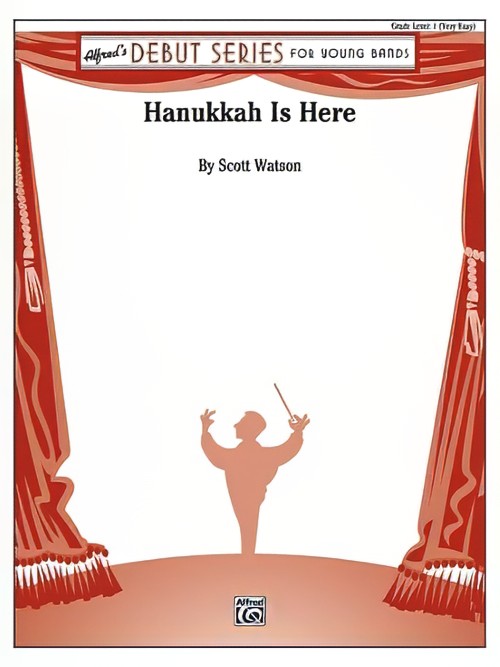 £52.95
£52.95Hanukkah is Here (Concert Band - Score and Parts) - Watson, Scott
For children, Hanukkah brings thoughts of a miracle from long, long ago and excitement each holiday season about what awaits. This new work musically conveys both reflection and joy with colourful scoring and expressive writing. Add wonder to your holiday performance this year with Hanukah Is Here.Duration: 2:30
Estimated dispatch 7-14 working days
-
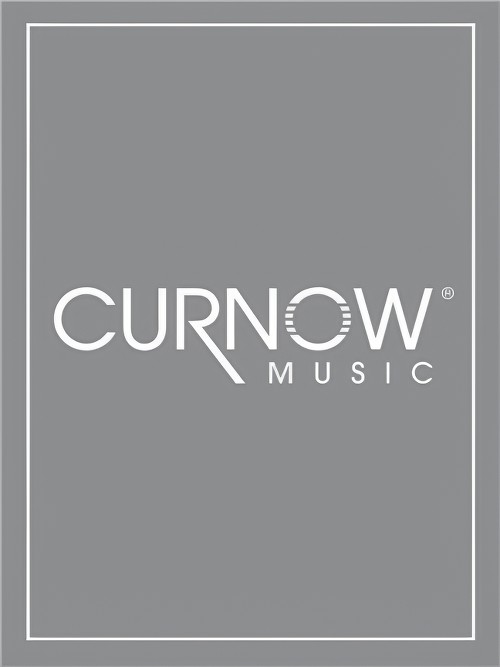 £84.99
£84.99Guardians of Peace (Concert Band - Score and Parts) - Hosay, James L.
Guardians of Peace is dedicated to the United States Atlantic Fleet. From their homeport of Norfolk, Virginia, they are ready and able to deploy to any region of the world at a moment's notice, to help maintain peace and stability throughout the world. They have a long, proud history of service and dedication, and played a major role in the success of Operations Desert Shield and Desert Storm. The level of dedication and self-sacrifice required by this type of service is the highest in all the military, as individuals must be separated from families and loved ones for long periods of time, while placing their lives and well-being in grave danger.Duration: 3.30
Estimated dispatch 7-14 working days
-
 £79.99
£79.99The Homefront: Musical Memories from World War II (Concert Band - Score and Parts) - Christensen, James
With the recent anniversary of the end of World War II, Americans have reflected on that special era in our history, a time when popular music played such an important role in the national consciousness. This outstanding showcase for band spotlights some of the fabulous songs of that era including: Thanks for the Memory, Don't Sit Under the Apple Tree, I'll Be Seeing You, It's Been a Long Long Time, Bell-Bottom Trousers, White Clifs of Dover, and Praise the Lord And Pass the Ammunition.
Estimated dispatch 7-14 working days
-
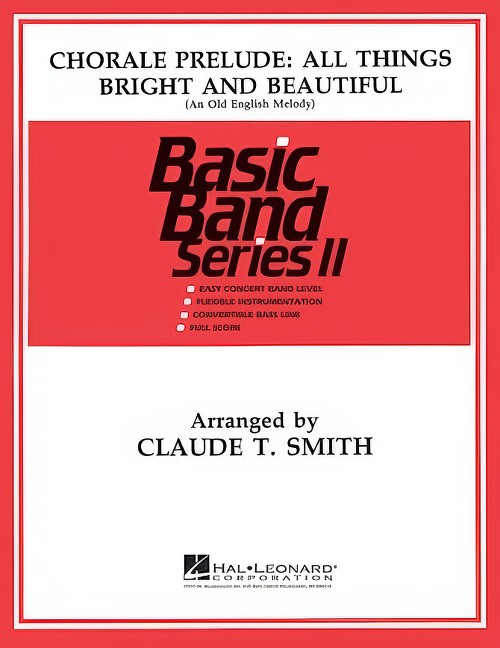 £57.50
£57.50Chorale Prelude: All Things Bright and Beautiful (Concert Band - Score and Parts) - Smith, Claude T.
Long tones, dynamic contrasts and long flowing lines make Claude T. Smith's chorale setting of this beautiful Old English melody an outstanding warm-up or concert selection.
Estimated dispatch 7-14 working days
-
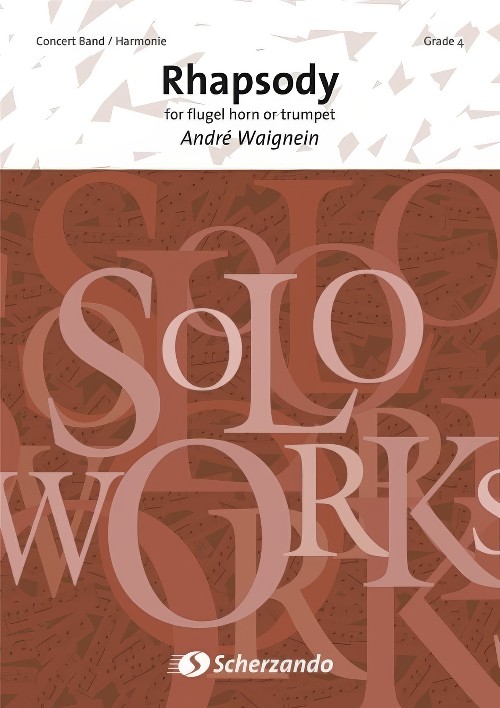 £134.99
£134.99Rhapsody (Flugel Horn or Trumpet Solo with Concert Band - Score and Parts) - Waignein, Andre
As a trumpet player Andre Waignein has composed many pieces for this instrument; extremely electrifying pieces meant for young trumpet-players, and more demanding works for professionals.With his rhapsody Andre Waignein wanted to compose a piece in which spontaneity dominates and in which the virtuosity, sonority and style of the soloist is featured to its maximum. Although the piece is not one of the most difficult, it nevertheless places high musical demands on the soloist. Following an impressive orchestral opening the soloist comes to the fore, with long phrases followed by more dynamic and rhythmic passages. The second movement gives evidence of extreme sensitivity and offers the soloist the opportunity to prove that the trumpet (flugel horn) can be a stirring and emotional instrument. The third movement is the most spectacular. The orchestra actively participates with increasingly delicate interventions. The soloist can display all the possibilities offered to him by his instrument. With a long sostenuto on the trumpet (flugel horn) the beautiful rhapsody ends.Duration: 6:00
Estimated dispatch 7-14 working days
-
 £64.35
£64.35Burma Patrol - Swearingen, James
No concert would be complete without a rousing rendition of a well?crafted King march. "Burma Patrol" has been a long?time favorite of march aficionados around the world who recognize quality music when they hear it. It goes without saying that King was a master at creating tuneful marches that provided each listener with a real toe-tapping experience. This is another wonderful march from the long list of gems by the great Karl King. Musical excitement from beginning to end!
Estimated dispatch 7-14 working days
-
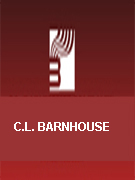 £34.65
£34.65Christmas Jam-Bear-ee (Concert Band - Score and Parts)
Nicest Christmas pieces we've heard in a long, long time. Absolutely no one can write for young players better than Jim Swearingen and this exceptional arrangement is definitely one of the finest Christmas pieces for bands at this grade level.
Estimated dispatch 7-14 working days
-
 £72.99
£72.99NATURE'S WAY (BandQuest) - Schuller, Gunther
From the composer: "Nature's Way for intermediate level band was commissioned by BandQuest, a project initiated by the American Composers Forum. Their mission is for major composers of national reputation to write works of high quality that take into consideration the (still comparatively limited) levels of musical development--both technical and conceptual--typical of such ensembles. I eagerly accepted the commission and the challenges implied thereby--that is, to reign in my creative imagination to some extent and limit the technical/conceptual demands to a more moderate level than is to be found in my previous compositions for band. Nonetheless, since the process of rehearsing, studying and performing a work created specifically for the school student market is--and must be, in my view--primarily educational, it was very clear to me that my work would (and should) challenge the players at least to their top levels, and even a little beyond that. Thus Nature's Way in no way represents a compromise of my personal style, nor my long held concepts of form, continuity, texture, and instrumentation. I have known for a long time that young, inquisitive minds are eager to learn from new experiences, from previously never encountered challenges, that is to say, to be pushed--gently--to rise above their present levels of achievement. That's what education is all about."
Estimated dispatch 7-14 working days
-
 £137.99
£137.99Odyssee Wind Band Set (Score & Parts)
The Odyssee tells the story of Odysseus, the undaunted hero. In times long ago the blind poet Homer wrote this famous epic. The "Odyssey" follows the "Iliad", the story of the bloody war between the Greek and the Trojans. This battle ends after ten years thanks to the Odysseys famous trick. the Trojan Horse. The Odyssey is not a war epic, but a story about perseverance, loyalty, adventure, and the survival instinct of its ingenious hero. In The Odyssey, Homer describes how Odysseus, the king of Ithaca, had to endure another ten years of affliction after the ten years of war in Troy before he could finally return to his home land. During those years, his wife, Penelope, had to try and keep her many admirers away. These men not only wanted het hand but also the kingship. To prove her husbands worth, she played a trick: "As soon as I have finished weaving this shroud for my father-in-law, Laertes, I will choose one of you to become my husband", she promised them. But during the night, she secretly loosened what she had woven during the day, prolonging the time until Odysseus would finally return. After twenty long years, when he finally stood at the door, she wondered: Is this really my husband? Is he an imposter? Cunningly, she asked him to move the bed, because only she and her husband know that the bed was immovable and was build around an old three trunk! Odysseus was deeply moved: this really was his wife, his Penelope! Nearly three thousands years later, the loyalty and strength of this character, and all the dangerous adventures that Odysseus survived thanks to courage and intelligence, still moves us today. Odyssee by Jan Bosveld is not just an adventure story, but rather a characteristic piece in which memories of Homers story can be heard. The composition opens with a firm, stirring theme describing our hero, Odysseus, in detail: This man is not to be taken lightly. The further development of this short introduction completes this character sketch: trustworthy, perseverant, and a genius. After that we can picture Odysseus on the lonely beach of Ogygia. Do the trumpets depict his memories of the war of Troy? Does he think of his wife, as we recognise the weaving loom of Penelope in the murmuring eighth? In the solemn, plaintive part that follows, we can imagine Penelope feeling lonely, sitting in the womens room with her servants.One of the girls plays the harp, but that does not clear the sombre atmosphere. Then we can imagine seeing the sorceress Circe, who changed Odysseus men into swine. After she gives a simple magic sign something follows that reminds us of the sound of pigs grunting. Then the Odysseus theme resounds: the hero comes to savi his comrades. Assisted by Hermes, he forces Circe to lift the spell. The piece ends the same way as it began, with an animated theme: Odysseus is still the same, undefeated and not to be taken lighty! 07:45
Estimated dispatch 7-14 working days
